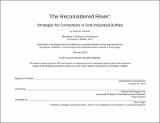| dc.contributor.advisor | Rafael (Rafi) Segal. | en_US |
| dc.contributor.author | Schmitz, Laura R. (Laura Renée) | en_US |
| dc.contributor.other | Massachusetts Institute of Technology. Department of Architecture. | en_US |
| dc.coverage.spatial | n-us-ny | en_US |
| dc.date.accessioned | 2015-06-10T18:42:01Z | |
| dc.date.available | 2015-06-10T18:42:01Z | |
| dc.date.copyright | 2015 | en_US |
| dc.date.issued | 2015 | en_US |
| dc.identifier.uri | http://hdl.handle.net/1721.1/97272 | |
| dc.description | Thesis: M. Arch., Massachusetts Institute of Technology, Department of Architecture, 2015. | en_US |
| dc.description | This electronic version was submitted by the student author. The certified thesis is available in the Institute Archives and Special Collections. | en_US |
| dc.description | Cataloged from student-submitted PDF version of thesis. | en_US |
| dc.description | Includes bibliographical references (page 86). | en_US |
| dc.description.abstract | This thesis sets out to connect two isolated neighborhoods within the post-industrial city of Buffalo, NY. The design strategy capitalizes on existing opportunities in Silo City, a neighborhood of abandoned grain elevators that attracts visitors with intermittent activities and seasonal events; and the Old First Ward, a river side residential neighborhood once home to grain elevator laborers. The two are separated by the Buffalo River, a barrier that once linked the two economically. There are three strategies within the Master Plan - River, Rail Spine and Ward Plan, each of which could be further developed and work together simultaneously. This thesis develops the River Plan and the urban elements within it. Each urban element within the plan can either repurpose, construct or deconstruct features along the river. One of these proposed elements is the Ice Boom Room which both repurposes a site and constructs a new building by using a seasonal and industrial process of the controlled melting of the ice on Lake Erie each winter as an opportunity to connect two neighborhoods year-round. This thesis asks how post-industrial cities like Buffalo can harness existing industrial and natural processes to promote growth and change. | en_US |
| dc.description.statementofresponsibility | by Laura R. Schmitz. | en_US |
| dc.format.extent | 86 pages | en_US |
| dc.language.iso | eng | en_US |
| dc.publisher | Massachusetts Institute of Technology | en_US |
| dc.rights | M.I.T. theses are protected by copyright. They may be viewed from this source for any purpose, but reproduction or distribution in any format is prohibited without written permission. See provided URL for inquiries about permission. | en_US |
| dc.rights.uri | http://dspace.mit.edu/handle/1721.1/7582 | en_US |
| dc.subject | Architecture. | en_US |
| dc.title | The reconsidered river : strategies for connections in post-industrial Buffalo | en_US |
| dc.title.alternative | Strategies for connections in post-industrial Buffalo | en_US |
| dc.type | Thesis | en_US |
| dc.description.degree | M. Arch. | en_US |
| dc.contributor.department | Massachusetts Institute of Technology. Department of Architecture | |
| dc.identifier.oclc | 910720303 | en_US |
